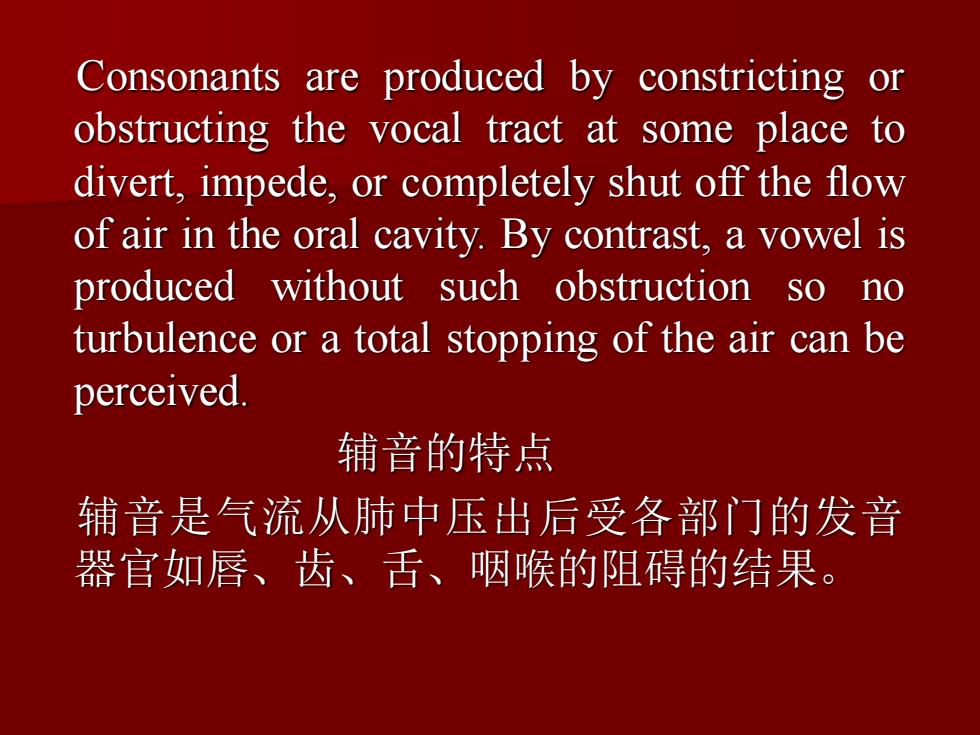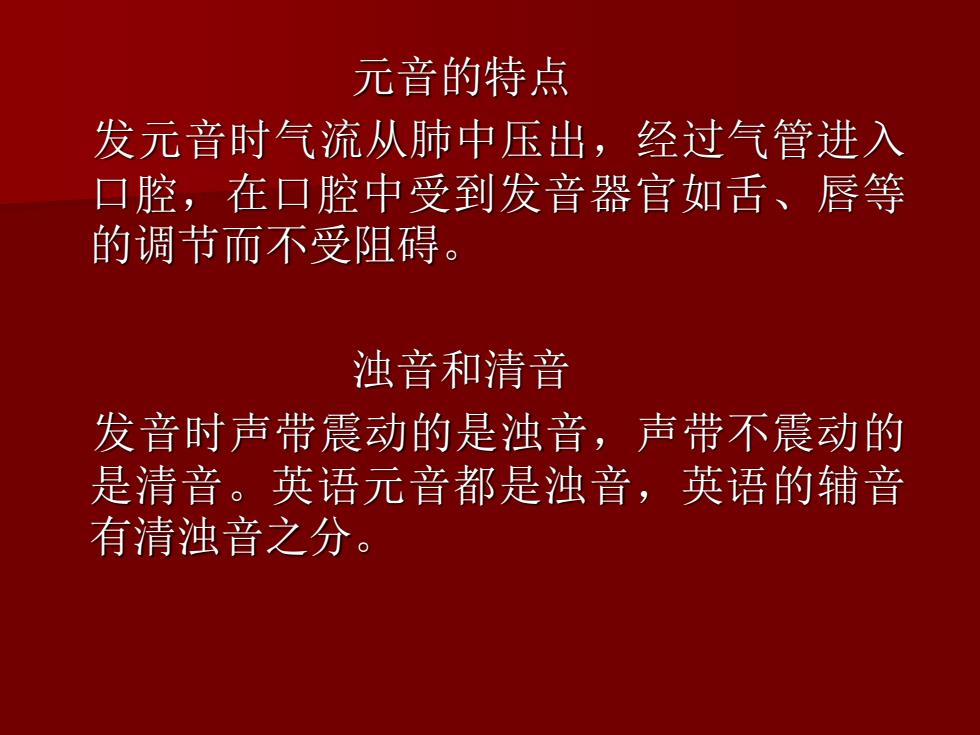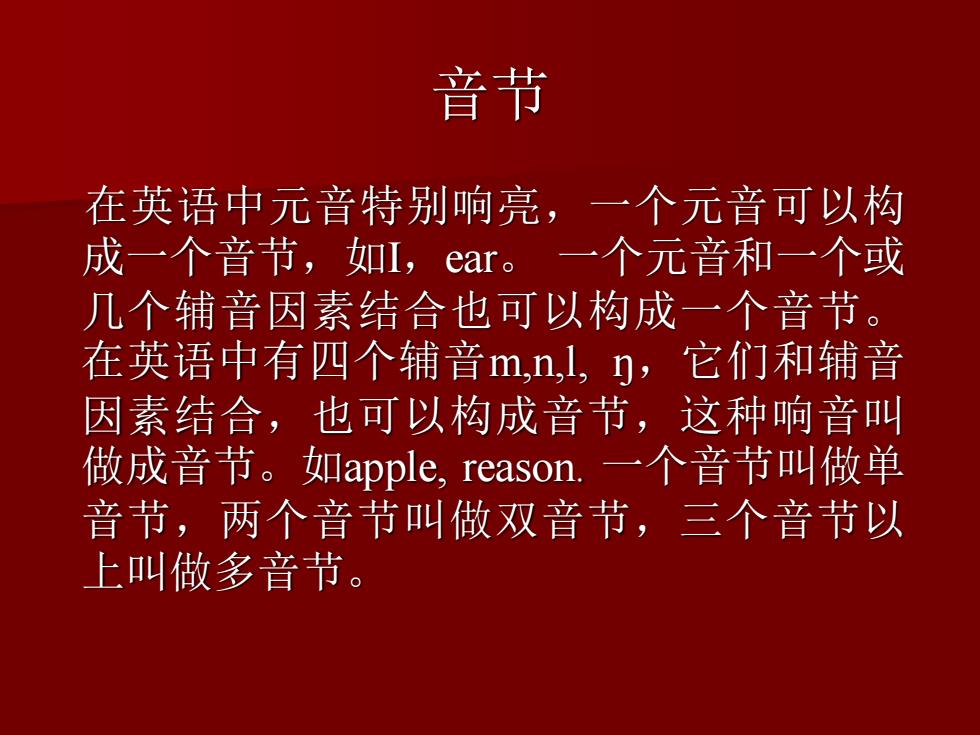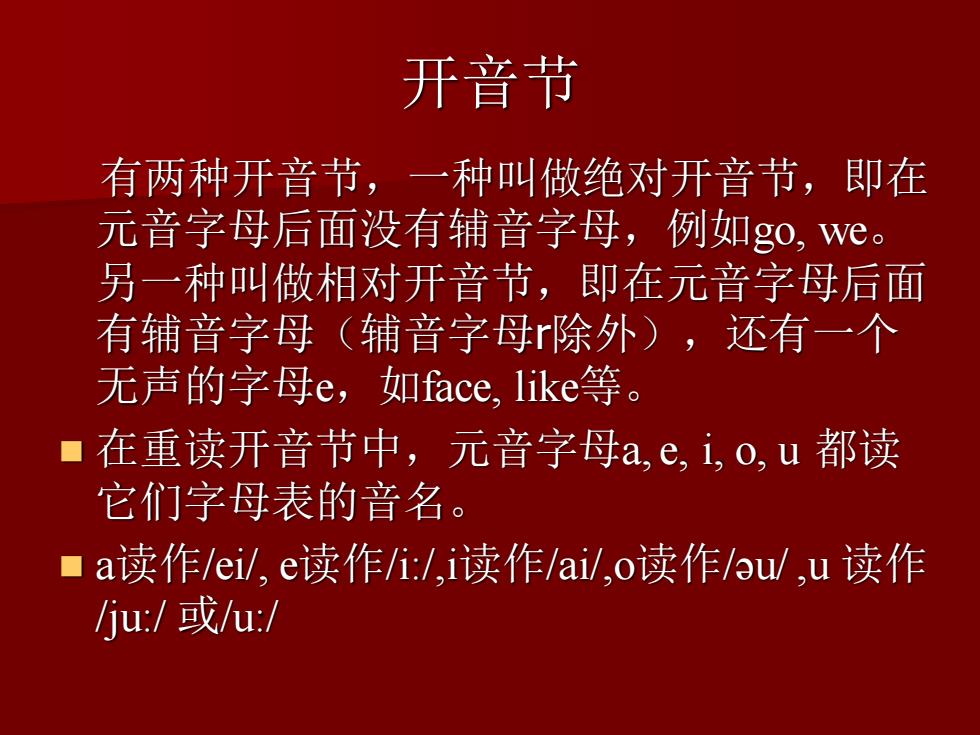
Consonants are produced by constricting or obstructing the vocal tract at some place to divert,impede,or completely shut off the flow of air in the oral cavity.By contrast,a vowel is produced without such obstruction so no turbulence or a total stopping of the air can be perceived. 辅音的特点 辅音是气流从肺中压出后受各部门的发音 器官如唇、齿、舌、咽喉的阻碍的结果
Consonants are produced by constricting or obstructing the vocal tract at some place to divert, impede, or completely shut off the flow of air in the oral cavity. By contrast, a vowel is produced without such obstruction so no turbulence or a total stopping of the air can be perceived. 辅音的特点 辅音是气流从肺中压出后受各部门的发音 器官如唇、齿、舌、咽喉的阻碍的结果

元音的特点 发元音时气流从肺中压出,经过气管进入 口腔,在口腔中受到发音器官如舌、唇等 的调节而不受阻碍。 浊音和清音 发音时声带震动的是浊音,声带不震动的 是清音。英语元音都是浊音,英语的辅音 有清浊音之分
元音的特点 发元音时气流从肺中压出,经过气管进入 口腔,在口腔中受到发音器官如舌、唇等 的调节而不受阻碍。 浊音和清音 发音时声带震动的是浊音,声带不震动的 是清音。英语元音都是浊音,英语的辅音 有清浊音之分

The Manners Of Articulation and the Places Of Articulation The categories of consonant,therefore,a are established on the basis of several factors.The most important of these factors are:(a)the actual relationship between the articulators and thus the way in which the air passes through certain parts of the vocal tract,and (b)where in the vocal tract there is approximation, narrowing,or the obstruction of air.The former is known as the Manners Of Articulation and the latter as the Places Of Articulation
The Manners Of Articulation and the Places Of Articulation The categories of consonant, therefore, are established on the basis of several factors. The most important of these factors are: (a) the actual relationship between the articulators and thus the way in which the air passes through certain parts of the vocal tract, and (b) where in the vocal tract there is approximation, narrowing, or the obstruction of air. The former is known as the Manners Of Articulation and the latter as the Places Of Articulation

音节 在英语中元音特别响亮,一个元音可以构 成一个音节,如l,ear。一个元音和一个或 几个辅音因素结合也可以构成一个音节。 在英语中有四个辅音m,nl,n,它们和辅音 因素结合,也可以构成音节,这种响音叫 做成音节。如apple,reason.一个音节叫做单 音节,两个音节叫做双音节,三个音节以 上叫做多音节
音节 在英语中元音特别响亮,一个元音可以构 成一个音节,如I,ear。 一个元音和一个或 几个辅音因素结合也可以构成一个音节。 在英语中有四个辅音m,n,l, ŋ,它们和辅音 因素结合,也可以构成音节,这种响音叫 做成音节。如apple, reason. 一个音节叫做单 音节,两个音节叫做双音节,三个音节以 上叫做多音节

开音节 有两种开音节,一种叫做绝对开音节,即在 元音字母后面没有辅音字母,例如go,we。 另一种叫做相对开音节,即在元音字母后面 有辅音字母(辅音字母除外),还有一个 无声的字母e,如face,like等。 ■ 在重读开音节中,元音字母a,e,i,o,u都读 它们字母表的音名。 ■ a读作/ei,e读作/i:/,i读作/ai,o读作/ou/,u读作 ju/或u:/
开音节 有两种开音节,一种叫做绝对开音节,即在 元音字母后面没有辅音字母,例如go, we。 另一种叫做相对开音节,即在元音字母后面 有辅音字母(辅音字母r除外),还有一个 无声的字母e,如face, like等。 ◼ 在重读开音节中,元音字母a, e, i, o, u 都读 它们字母表的音名。 ◼ a读作/ei/, e读作/i:/,i读作/ai/,o读作/əu/ ,u 读作 /ju:/ 或/u:/